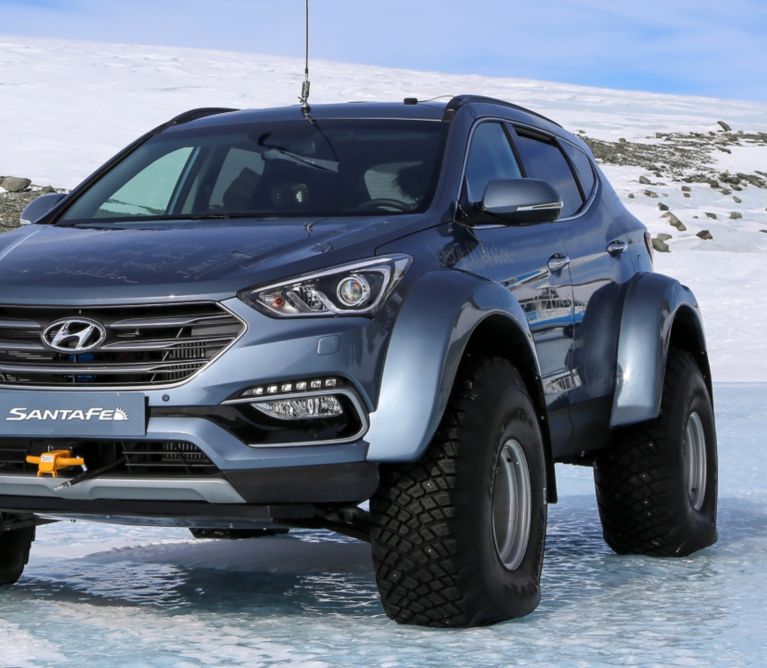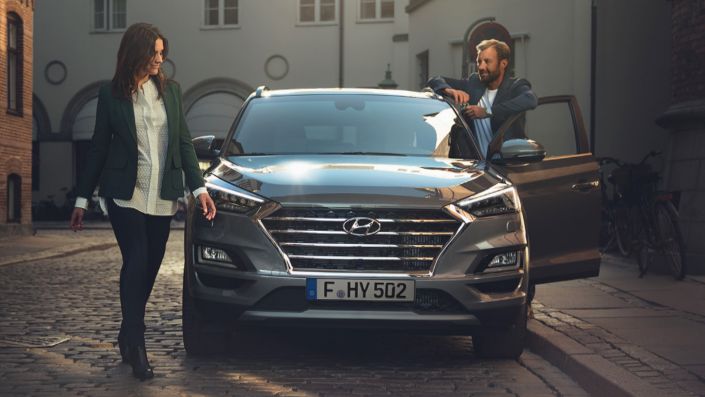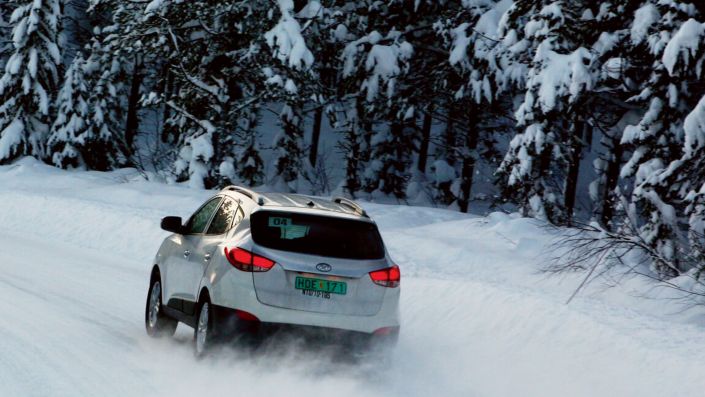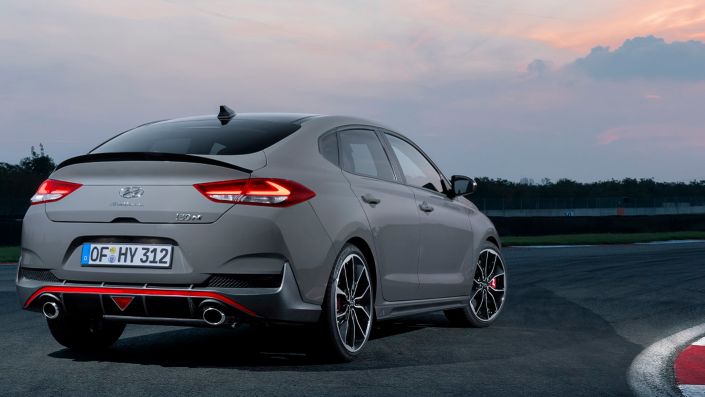How did you get involved?
Patrick: My great-grandfather was Sir Ernest Shackleton, the Polar explorer. When Hyundai proposed driving the first passenger car across the Antarctic, they asked if there was somebody from the family who’d be interested to get involved - and I was very keen.
Has the family continued Sir Ernest Shackleton’s legacy?
Patrick: My grandfather, Shackleton’s son, was an explorer in his own right. My mother is on the board of the James Caird Society, which is named after the boat from Shackleton’s famous expedition when they were marooned on Elephant Island, and she has supported previous expeditions. I’m not a Polar explorer; I’m an indoor guy. I start companies in the digital space. That’s my thing. So it’s a big cultural shift.
This winter, a team of adventurers, including the great-grandson of polar explorer Sir Ernest Shackleton, Patrick Bergel, became the first to cross the Antarctic continent in a passenger car.
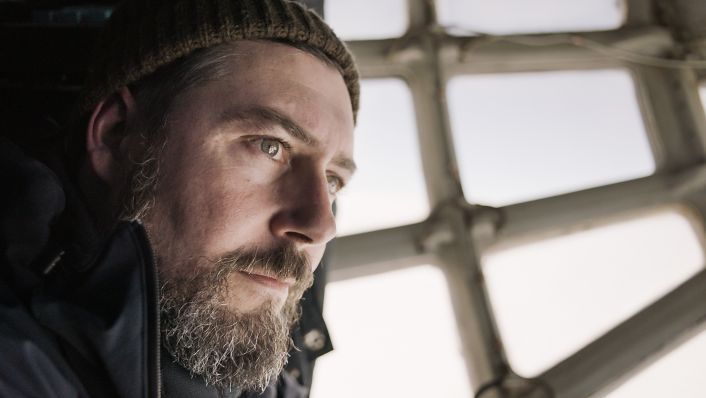
Were you nervous?
Patrick: I definitely had some trepidation; it would be silly not to. It is Antarctica and anything can happen. But mostly I was really excited by the prospect.
How involved were you in the preparation and planning of the expedition?
Patrick: The first time we actually met as a team was in Iceland for some crevasse training, getting the first sight of the vehicles and going over snow, ice, rock etc. It was four or five days so it was only a taster of what was to come.
Did you take any Polar artefacts from your great-grandfather with you?
Patrick: There was a compass but unfortunately it is uninsurable and it’d be remiss of me to leave family gear at the Pole or break it. I took the diaries with me… in Kindle format. They were fascinating and it meant much more than just reading them in London.
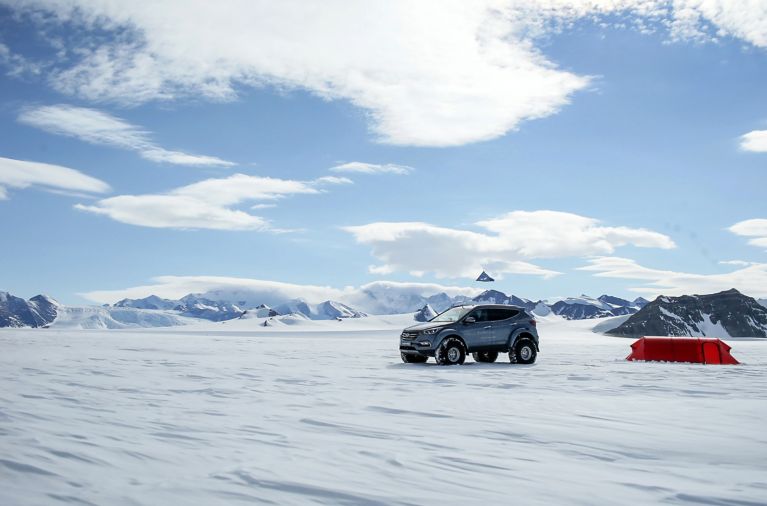
How did you get to Antarctica?
Patrick: We flew to Chile and then down to Punta Arenas, the most populated area in the south with an airstrip and the jumping-off point for people coming into the west of the Antarctic. Then we flew over on the Aleutian 76, a Soviet-era troop carrier with no windows. That was quite exciting.
What were your first impressions?
Patrick: Seeing the car being unloaded from the Aleutian on a blue ice runway was great, and behind it the Drake Icefalls - the end of a glacier crashing between two mountains - was a first taste of the kind of impossibly beautiful stuff that you see down there.
How did the Hyundai perform?
Patrick: My first chance to actually drive the Santa Fe was in Antarctica. Obviously lots of technology, trying to brake on blue ice, there is no friction so you feel like you’ve got a cat wriggling under your foot. It’s full automatic so you can put it into a higher gear but generally you didn’t. But it’s not about driving fast down there. Our average speed was 27km/h over thirty days. And it’s all kind of terrain: blue ice, deep snow, compacted snow.
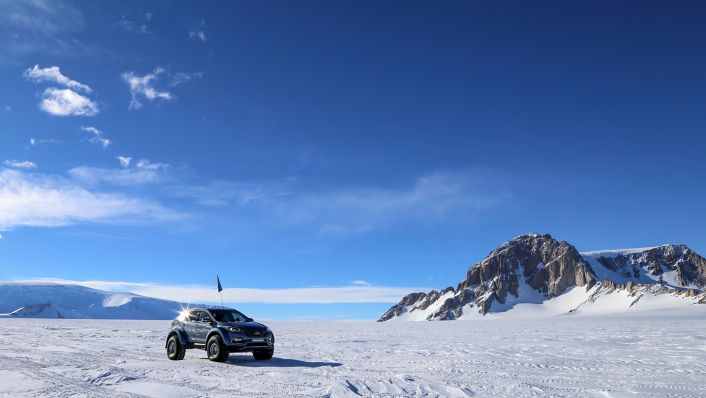
How many cars were you and how did you communicate?
Patrick: We had four vehicles - the Santa Fe and three supports – with intercoms to talk to each other and keep ourselves entertained.
So how did the average day work?
Patrick: On the vast majority of days, you would drive to some bleak point and along the way you would stop off for a pee - which is something one learns to do quite quickly in Antarctica. We didn’t really stop and eat much during the day, we just had bags of cheese and salami - we had a mountain of salami in our car! And then at night the first thing you do is put up camp and there was a kitchen tent just about big enough for everyone to squeeze into. Tom the British guide was the chef, but that was mostly boiling water because we had bags of the freeze-dried stuff. A lot of mock Asian astronaut food which was, well, tangy. There was a lot of shepherd’s pie and stuff too.
And what about waste?
Patrick: It’s a pristine environment so it all – and I mean everything - gets taken away. You’ve got to respect the environment down there and you don’t want to be the first person to leave a chocolate wrapper on the continent!
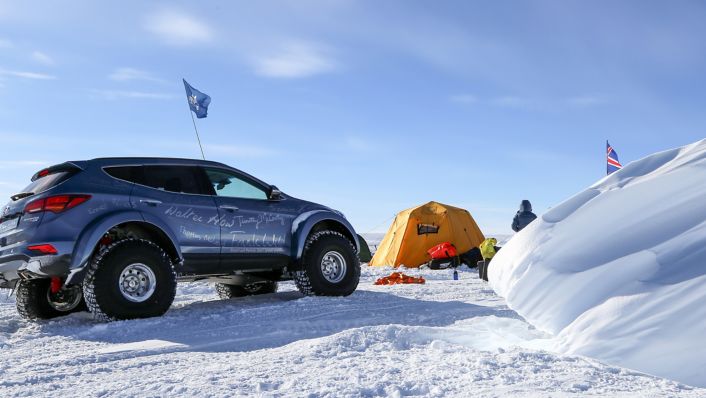
Describe the first part of the journey…
Patrick: The first part was from the Drake Icefall to Patriot Hills and once you get past there you enter two or three days of featurelessness studded with sastrugi ice structures that get laid down by the wind. They are incredibly beautiful, they’ve got this kind of kinetic energy to them, like Brancusi sculptures that have been half-buried and re-formed. Very little snow actually falls in the Antarctic – only a few centimetres a year – and it’s really just ice particles being moved around, so you really have to pick your way through those, rather than drive across them.
Did you encounter many crevasses?
Patrick: There are crevasses all over the Antarctic - the guys at Union briefed us with up-to-date satellite imagery of where the crevasses were in relation to our proposed GPS route.
How did you refuel?
Patrick: There’s an airstrip called Thiel’s Corner, which is basically a long line of fuel drums and a bulldozer, where some planes refuel. We re-fuelled there and also at the Pole, but we also carried a trailer of fuel at the back. We used Jet-A, kind of the same fuel used in long-haul flights on jet airliners.
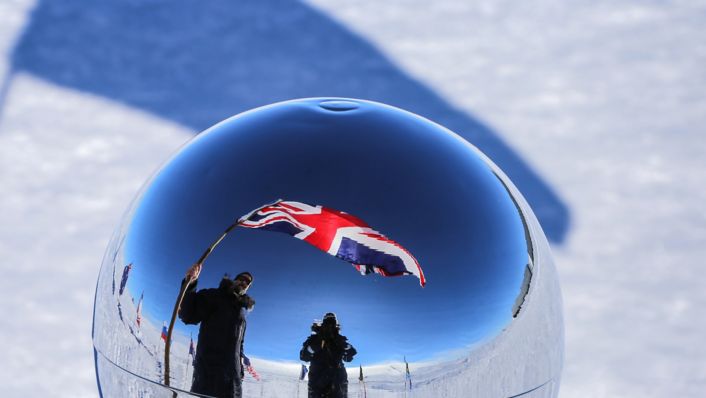
What was the weather like?
Patrick: It was minus 28 at the Pole and you just have to get used to it. But we did have whiteouts, and the driving experience is quite incredible. There are degrees of whiteout where you can’t see three feet, or you can’t see ten feet in front of you, but that’s not necessarily a problem depending on what your terrain is.
What’s it like driving in a whiteout?
Patrick: The driving experience is quite incredible. There are degrees of whiteout where you can’t see three feet, or you can’t see ten feet in front of you, but that’s not necessarily a problem depending on what your terrain is. On relatively flat ground you just go down to 5-10km/h and try to follow the path in front of you. But generally, because there’s no visual stimulus and your body’s connected to the vehicle, your brain’s not being fed enough information so it goes a bit haywire. You also start to make up things. It’s normal to start hallucinating, seeing trees and forests around you, but it’s just dirt on the windscreen. Your mind is trying to create things to look at - it’s like thinking about your favourite food when you're on rations for a long time.
How was it arriving at the Pole?
Patrick: Firstly, it was just a rush of joy to be there at the bottom of the world and the sense of the planet becomes much more apparent. And then the fact that this was a place that my Great Grandfather tried to get to more than once and I was there, it felt like a genuine connection, one I could not have had without going.
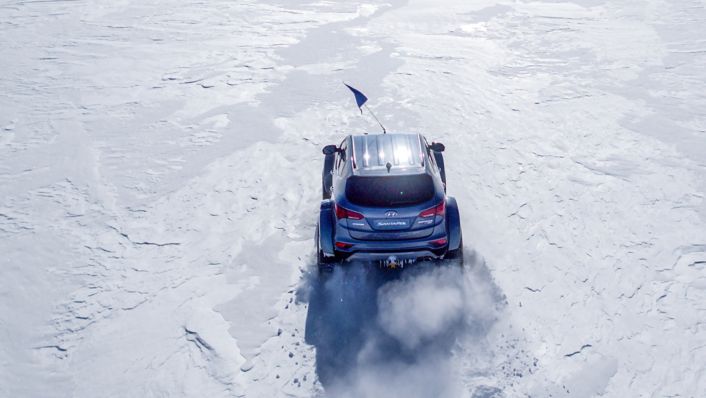
What happened when you left the Pole?
Patrick: We drove down the Leverett Glacier, which is a chunk of travel, and then it is pretty featureless again. So that’s kind of a slog. Then we came across the Traverse. All the fuel for the South Pole base is brought by boat to McMurdo, which is where we were going, and then dragged by bulldozers in enormous rubber fuel bladders very slowly in convoy to the Pole, which was great - because it means that some bulldozers have bashed the sastrugi down so it’s like a road and at times you get up to reasonably good speeds. Then there’s a sort of neck where the Leverett Glacier ends and the Trans-Antarctic Mountains begin, which is unbelievably beautiful – and this is the point at which nobody in a wheeled vehicle has been beyond.
So the Santa Fe broke new ground there then?
Patrick: Yes. Only a few dozen people actually get to see the Trans-Antarctic Mountains and most of them are unclimbed because you have zero support. I didn’t realise we would be the first to do this in a wheeled vehicle – but that was sort of a cherry on the cake.
So then where did the route take you?
Patrick: The Ross Ice Shelf comes next. It’s fed by glaciers from over the mountains and is moving 2-5m a year, so you are now travelling over just ice. There is a ceremonial stick – a pole in the ice – marking when the rock underneath has gone but the ice is about 2,000ft thick at that point, so there’s no danger of falling into it! There is sort of a flagged route, though, done by the guys on sleds so you don’t wander off into crevasses. We had some big whiteout periods there and cloud level is incredibly low because it’s so flat, so you get these kind of rolling clouds tumbling over one another. Then we came to Erebus, which is the only active volcano in the region.
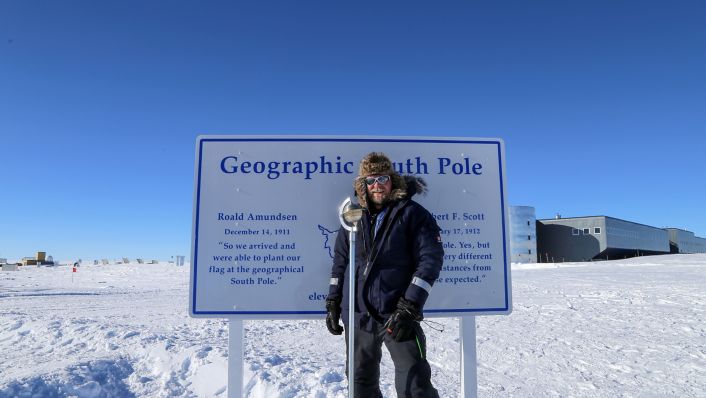
Was that another landmark moment for you?
Patrick: Yes, because my Great Grandfather was the first to climb Erebus and I’d seen pictures of it as a kid. It is quite spectacular, with plumes of smoke coming out and Mount Terror standing alongside. It was wonderful because I was at the wheel and it kind of exploded out of the cloud.
And what was the next challenge?
Patrick: There’s a deep crevasse field on the edge of McMurdo and we had to rope up the vehicles to get over it. I guess that was the most concerning bit of the trip – and it was one of the last bits! At night, around the camps, we would drive a loop in the snow and nobody was allowed to go outside it because it was not safe. But that was just sort of common sense - there wasn’t a great deal of active danger. With the crevasse field we had to drive very carefully and we did get stuck at one point, for a few seconds. It wasn’t the Hyundai, but one of the trucks we were tied to. There was a sort of vroomph then they got dragged out.
And what was the next challenge?
Patrick: There’s a deep crevasse field on the edge of McMurdo and we had to rope up the vehicles to get over it. I guess that was the most concerning bit of the trip – and it was one of the last bits! At night, around the camps, we would drive a loop in the snow and nobody was allowed to go outside it because it was not safe. But that was just sort of common sense - there wasn’t a great deal of active danger. With the crevasse field we had to drive very carefully and we did get stuck at one point, for a few seconds. It wasn’t our vehicle, but one of the ones we were tied to. There was a sort of vroomph then they got dragged out.
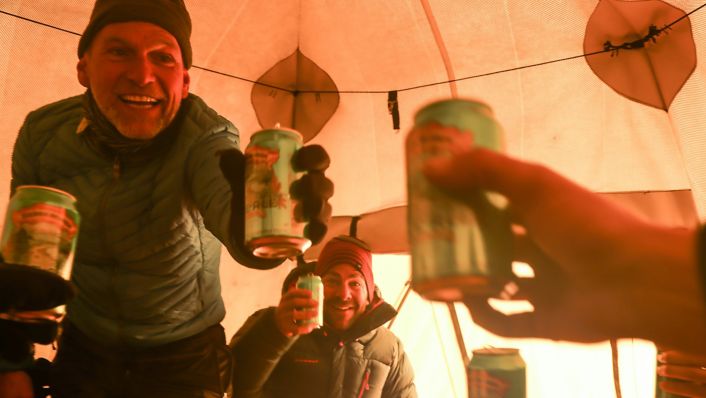
How do you feel this expedition compares to Shackleton’s?
Patrick: I’m very reluctant to make direct comparisons. It is quite something to have been the first to do this in a wheeled vehicle, but what we did was one thousandth as hard as what they did. You know, no comparison – modern appurtenances, comparative luxury. So I don’t think we’re under any illusions about that. They were incredibly physically fit to endure what they did and I think beyond that they had some sense of mission, an imperial mission that can’t be invoked any more - the idea that they were the first people to go and they were going to plant a flag.
And how did it feel to reach the finish?
Patrick: It was quite sad actually. I felt quite sad to be leaving the place as well as glad to have been there. I’d love to go back.

